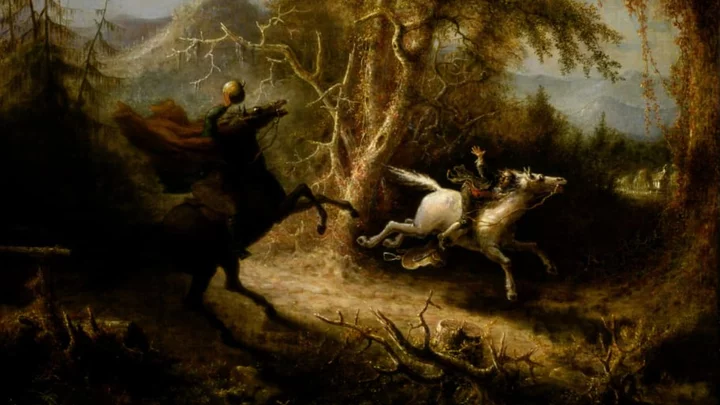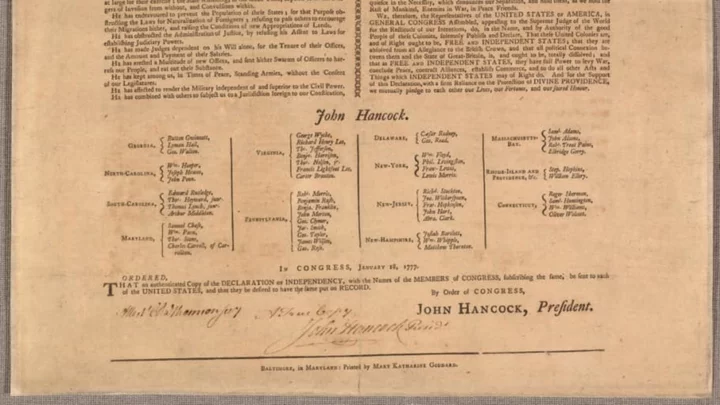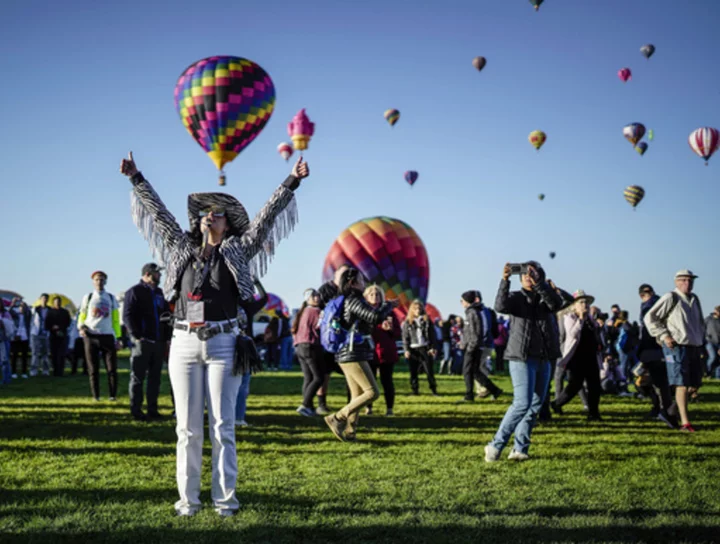Headless horsemen gallop through the folklore of several countries around the world, usually carrying their own head as they ride their ghostly steeds. Many of these stories originated when beheading was a common method of execution, and over time, the figure has become one of the most haunting images in supernatural lore.
1. The Legend of Sleepy Hollow // United States
Washington Irving’s 1820 short story The Legend of Sleepy Hollow is one of the most famous stories of a headless horseman. Irving drew upon European sources in crafting his tale, which tells the story of the residents of the titular glen of Sleepy Hollow and the hauntings they experience. A mysterious horseman said to be a ghost of a soldier who lost his head during the American Revolutionary War eventually has a dramatic nighttime confrontation with local school teacher Ichabod Crane. The story’s fame is so enduring that now, more than 200 years after it was first published, it draws crowds of people to New York’s Hudson Valley: 100,000 tourists flock to the real places that inspired The Legend of Sleepy Hollow every October.
2. The Dullahan // Ireland
The legend of the Dullahan (pronounced “DOOL-a-han”) is an Irish tale rooted in Celtic mythology. According to the lore, the Dullahan was originally a fertility god named Crom Dubh who insisted on the sacrifice of decapitation. He was banished following the arrival of Christianity in Ireland, but has continued to haunt the land on horseback, carrying his own head. The Dullahan is often regarded as an omen of doom. It’s said that if someone opens their door while one is driving a horse-drawn coach past them, a basin of blood will be thrown in their face.
3. Ewen of the Little Head // Scotland
The island of Mull off the west coast of Scotland has long been haunted by the legend of a headless horseman. Ewen of the Little Head (Eoghan a’Chinn Bhig in Gaelic) was the son and heir of a local clan chief who lost his head in a battle in 1538. Ewen’s horse ran for miles along the river carrying his headless body until it became exhausted and stopped near a waterfall. Ever since, Ewen’s headless ghost has been rumored to haunt the paths of Mull on horseback. Locals who believe they’ve encountered the spirit are said to be treated like celebrities by fellow islanders.
4. Der Kopfloser Reiter // Germany
Germany has one of the longest associations with headless horsemen legends, with some accounts going back centuries. One tells the story of Hans Jagenteufel, a headless rider condemned to wander the Earth as the price he must pay for escaping justice for his sins during his lifetime. Another is known as Der Kopfloser Reiter (the headless rider), a horseman who emerges from a forest to warn people of impending danger they may face.
5. El Muerto del Rodeo // United States
Texas—particularly the southern part of the state—has its own headless horseman legend. The lore says he’s the ghost of a rider executed for hustling in South Texas in the 19th century whose head was tied to his horse, which was then set loose to act as a warning to other hustlers. He continues to haunt the route his body and steed once took to this day [PDF]. The legend has even become the subject of academic research, with papers dating back to 1848.
6. The Headless Horsemen of Devon // England
The county of Devon in southwestern England has a generally quiet reputation. But behind the placid veneer there lies a number of eerie stories from local folklore, including more than one headless horseman. One is said to haunt the moor of Dartmoor; another is claimed to be the ghost of a priest beheaded during the Middle Ages who travels through one of the oldest roads in the town of Torquay on horseback. A variant of the legend sometimes has the headless man driving a coach led by a horse.
This article was originally published on www.mentalfloss.com as 6 Terrifying Tales of Headless Horsemen.









